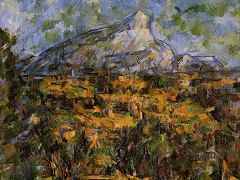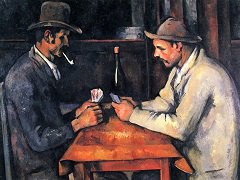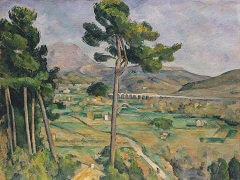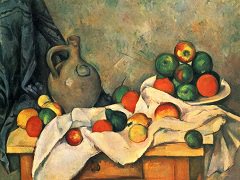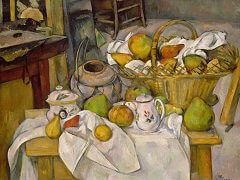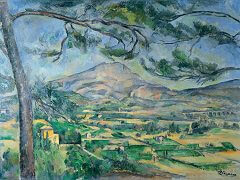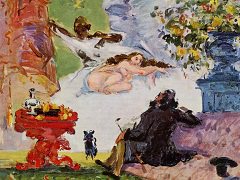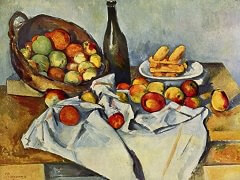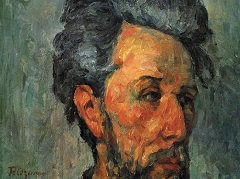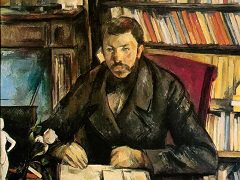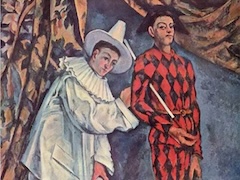House In Provence, 1885-86 by Paul Cezanne
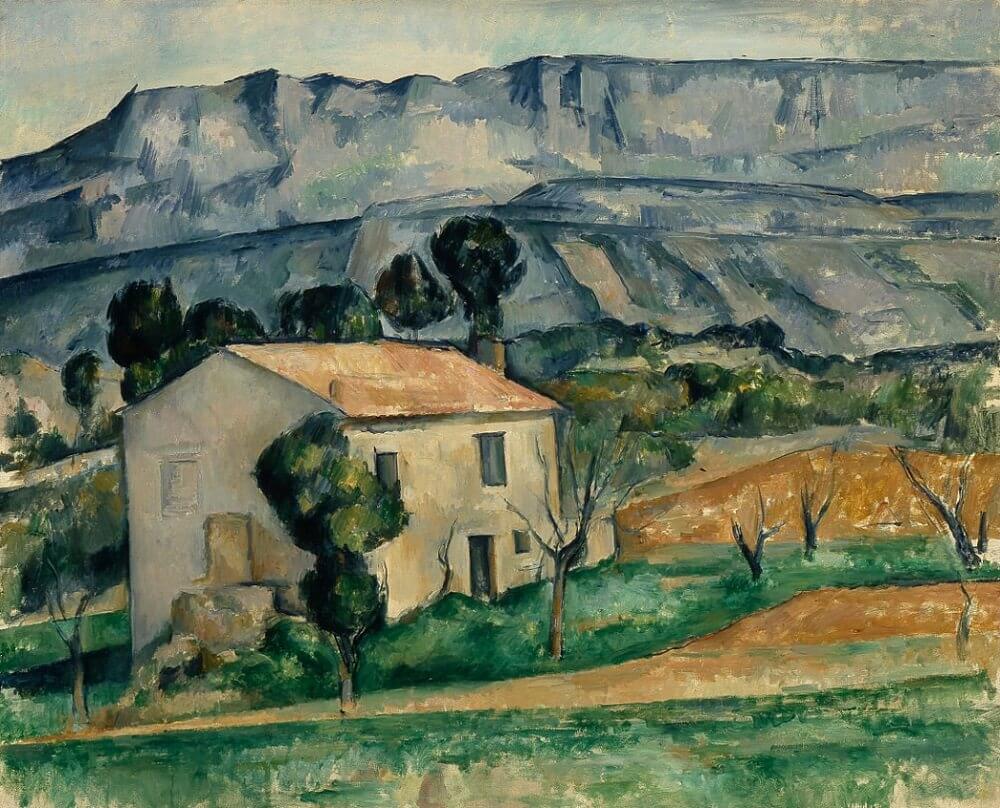
House In Provence, 1885-86 is one of the exemplary Cezannes - an original poetic harmony of the artificial and the natural. The house is like the mountain in its vertical and sloping planes, the mountain is in places clean cut and bare like a human construction. The man-made looks abstract and impersonal, without accident of history, while the natural shows many signs of wear - irregular outlines, notched and broken slopes, and varied stages of growth - together a scale from the geometric to the organic, terminating in the rounded broken shapes of the trees. By a typical inversion, poetic too, the straight forms have the warmest colors, the less regular mountain and trees are cold; but the natural and artificial penetrate each other through common tones as well as parallel shapes. The ridge of the house, subtly broken, is prolonged in a wavering line of vegetation.
Very fine is the composition of trees isolating the house from the rest of the landscape. They are broadly symmetrical in pattern, and the edges of the farther group are related to the breaks and shadows on the mountain directly above. The rightmost tree, highest of all, rises from the chimney, as though a part of the house; it creates an axis near the middle of the picture, uniting the house and the mountain. This tree is just beneath the lightest spot on the mountain, the focus also of discreetly converging lines of the hillside below, of the farthest tree at the lower right, and of the leftmost gable of the house. Two foreground trees, superposed to suggest a single tree, mask the joining of the two walls. This bold device strengthens the horizontal of the house and reduces the intensity of convergence of these walls - they seem to merge vaguely, as if at an angle approaching 180 degrees. The placing of the windows and door - oddly, yet in harmony with nearby forms - is an example of Cezanne's great scruple and delicacy in the design of details. See how the tree masks one window, and how the door and the other window form a slightly sloping line with the chimney and the tree above it; imagine the dullness of the first window complete and the stiffness of the other openings in a normal alignment and you will admire Cezanne more for his arbitrariness and discretion. Especially beautiful - and like his water colors - is the painting of the leafless tree and of its repeats at the right, an element of the immaterial and tentative in this eternal, substantial landscape. When writers, carried away by the sublimity of such a work, speak of the "essential" or "underlying" forms of nature revealed by Cezanne, we may reject the philosophy of nature implied in such a view, but we respect the metaphor - the forms seem to us indeed a revelation of a harmony in nature not given in ordinary perception and requiring for its expression in art a mind preternaturally sensitive to order.


